Related Research Articles

Edward Witten is an American mathematical and theoretical physicist. He is a Professor Emeritus in the School of Natural Sciences at the Institute for Advanced Study in Princeton. Witten is a researcher in string theory, quantum gravity, supersymmetric quantum field theories, and other areas of mathematical physics. Witten's work has also significantly impacted pure mathematics. In 1990, he became the first physicist to be awarded a Fields Medal by the International Mathematical Union, for his mathematical insights in physics, such as his 1981 proof of the positive energy theorem in general relativity, and his interpretation of the Jones invariants of knots as Feynman integrals. He is considered the practical founder of M-theory.

Yang Chen-Ning or Chen-Ning Yang, also known as C. N. Yang or by the English name Frank Yang, is a Chinese theoretical physicist who made significant contributions to statistical mechanics, integrable systems, gauge theory, and both particle physics and condensed matter physics. He and Tsung-Dao Lee received the 1957 Nobel Prize in Physics for their work on parity non-conservation of weak interaction. The two proposed that one of the basic quantum-mechanics laws, the conservation of parity, is violated in the so-called weak nuclear reactions, those nuclear processes that result in the emission of beta or alpha particles. Yang is also well known for his collaboration with Robert Mills in developing non-abelian gauge theory, widely known as the Yang–Mills theory.

David Jonathan Gross is an American theoretical physicist and string theorist. Along with Frank Wilczek and David Politzer, he was awarded the 2004 Nobel Prize in Physics for their discovery of asymptotic freedom. Gross is the Chancellor's Chair Professor of Theoretical Physics at the Kavli Institute for Theoretical Physics (KITP) of the University of California, Santa Barbara (UCSB), and was formerly the KITP director and holder of their Frederick W. Gluck Chair in Theoretical Physics. He is also a faculty member in the UCSB Physics Department and is currently affiliated with the Institute for Quantum Studies at Chapman University in California. He is a foreign member of the Chinese Academy of Sciences.
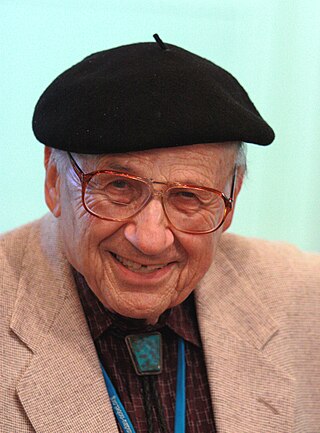
Walter Kohn was an Austrian-American theoretical physicist and theoretical chemist. He was awarded, with John Pople, the Nobel Prize in Chemistry in 1998. The award recognized their contributions to the understandings of the electronic properties of materials. In particular, Kohn played the leading role in the development of density functional theory, which made it possible to calculate quantum mechanical electronic structure by equations involving the electronic density. This computational simplification led to more accurate calculations on complex systems as well as many new insights, and it has become an essential tool for materials science, condensed-phase physics, and the chemical physics of atoms and molecules.
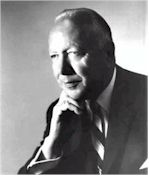
Julius Adams Stratton was a U.S. electrical engineer and university administrator. He attended the University of Washington for one year, where he was admitted to the Zeta Psi fraternity, then transferred to the Massachusetts Institute of Technology (MIT), from which he graduated with a bachelor's degree in 1923 and a master's degree in electrical engineering (EE) in 1926. He then followed graduate studies in Europe and the Technische Hochschule of Zürich, Switzerland, awarded him the degree of Doctor of Science in 1927.
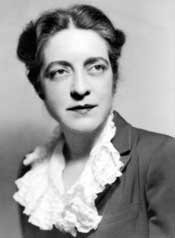
Melba Newell Phillips was an American physicist and pioneer science educator. One of the first doctoral students of J. Robert Oppenheimer at the University of California, Berkeley, Phillips completed her Ph.D. in 1933, a time when few women pursued careers in science. In 1935 Oppenheimer and Phillips published their description of the Oppenheimer–Phillips process, an early contribution to nuclear physics that explained the behavior of accelerated nuclei of radioactive hydrogen atoms. Phillips was also known for refusing to cooperate with a U.S. Senate judiciary subcommittee's investigation on internal security during the McCarthy era that led to her dismissal from her professorship at Brooklyn College, where she was a professor of science from 1938 until 1952.
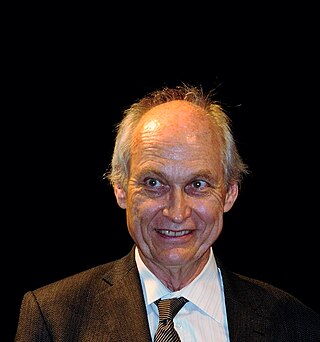
Michael S. Turner is an American theoretical cosmologist who coined the term dark energy in 1998. He is the Rauner Distinguished Service Professor Emeritus of Physics at the University of Chicago, having previously served as the Bruce V. & Diana M. Rauner Distinguished Service Professor, and as the assistant director for Mathematical and Physical Sciences for the US National Science Foundation.

Robert Coleman Richardson was an American experimental physicist whose area of research included sub-millikelvin temperature studies of helium-3. Richardson, along with David Lee, as senior researchers, and then graduate student Douglas Osheroff, shared the 1996 Nobel Prize in Physics for their 1972 discovery of the property of superfluidity in helium-3 atoms in the Cornell University Laboratory of Atomic and Solid State Physics.

Roy Jay Glauber was an American theoretical physicist. He was the Mallinckrodt Professor of Physics at Harvard University and Adjunct Professor of Optical Sciences at the University of Arizona. Born in New York City, he was awarded one half of the 2005 Nobel Prize in Physics "for his contribution to the quantum theory of optical coherence", with the other half shared by John L. Hall and Theodor W. Hänsch. In this work, published in 1963, he created a model for photodetection and explained the fundamental characteristics of different types of light, such as laser light and light from light bulbs. His theories are widely used in the field of quantum optics. In statistical physics he pioneered the study of the dynamics of first-order phase transitions, since he first defined and investigated the stochastic dynamics of an Ising model in a largely influential paper published in 1963. He served on the National Advisory Board of the Center for Arms Control and Non-Proliferation, the research arms of Council for a Livable World.
Daniel Harry Friedan is an American theoretical physicist and one of three children of the feminist author and activist Betty Friedan. He is a professor at Rutgers University.
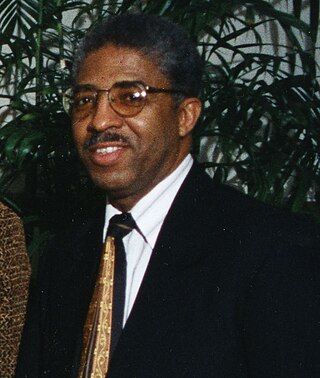
James H. Stith is an American physicist and educator. He is known for his influential roles in multiple scientific societies. He is the former vice president of the Physics Resource Center at the American Institute of Physics, a past president of the American Association of Physics Teachers, and a past president of the National Society of Black Physicists.
Peter D. Zimmerman was an American nuclear physicist, arms control expert, and former Chief Scientist of the Senate Foreign Relations Committee. At his death, he was Emeritus Professor of Science and Security at King's College London. He retired from the college in August 2008 and was named Professor Emeritus on 1 September of the same year.
Harry George Drickamer, born Harold George Weidenthal, was a pioneer experimentalist in high-pressure studies of condensed matter. His work generally concerned understanding the electronic properties of matter.

Julius Henry "Jute" Taylor was a professor emeritus at Morgan State University, where he was also the first chairperson of the department of physics, which he helped to establish at the university. He was the second African-American person to receive a PhD from the University of Pennsylvania in Philadelphia, Pennsylvania, and the first African-American person to receive a PhD in physics at the university. Taylor's research focused on x-ray diffusion, and electrical and optical properties of semi-conductors.

Frederick Duncan Michael Haldane, known as F. Duncan Haldane, is a British-born physicist who is currently the Sherman Fairchild University Professor of Physics at Princeton University. He is a co-recipient of the 2016 Nobel Prize in Physics, along with David J. Thouless and J. Michael Kosterlitz.
Noah David Finkelstein is a professor of physics at the University of Colorado Boulder. He is a founding co-director of the Colorado Center for STEM Learning, a President’s Teaching Scholar, and the inaugural Timmerhaus Teaching Ambassador. His research focuses on physics education and on developing models of context, the scope of which involves students, departments, and institutional scales of transformation. In 2010, Finkelstein testified to the United States House Committee on Science, Space and Technology on how to strengthen undergraduate and postgraduate STEM education.
David Sherrington is a British theoretical physicist and Wykeham Professor of Physics Emeritus at the University of Oxford. He is known for his work in condensed matter and statistical physics, and particularly for the invention of the Sherrington-Kirkpatrick model, an exactly solvable mean-field model of a spin glass.
Jacqueline Krim is an American condensed matter physicist specializing in nanotribology, the study of film growth, friction, and wetting of nanoscale surfaces. She is a Distinguished University Professor of Physics at North Carolina State University.
Warren Wesley Buck III is an American physicist. He is credited with establishing the physics PhD program at Hampton University, a historically Black college in Hampton, Virginia, which was also the campus's first PhD program in any subject. Buck was also the first chancellor of University of Washington-Bothell and oversaw the university's transition to a four-year institution. His research focuses on nuclear and subatomic particles, including studies of the interactions between particles and anti-particles and the nature of mesons and the quark model.
Beverly Karplus Hartline is an American physicist, science communicator, and academic administrator, known for her research in physics outreach to the general public and for the promotion of women in physics and the sciences. She is a former deputy director of the Argonne National Laboratory, and professor emerita of geological engineering at Montana Technological University, where she was vice-chancellor for research and dean of the graduate school before retiring.
References
- 1 2 3 4 5 Wheeler, Gerald F. (8 April 1999). "Meet your new president: Larry Kirkpatrick". The Physics Teacher. 37 (2): 70. doi:10.1119/1.880176.
- 1 2 "Larry Kirkpatrick, Ph.D". Montana State University. Retrieved 22 February 2022.
- ↑ "APS fellow archive". American Physical Society. Retrieved 22 February 2022.